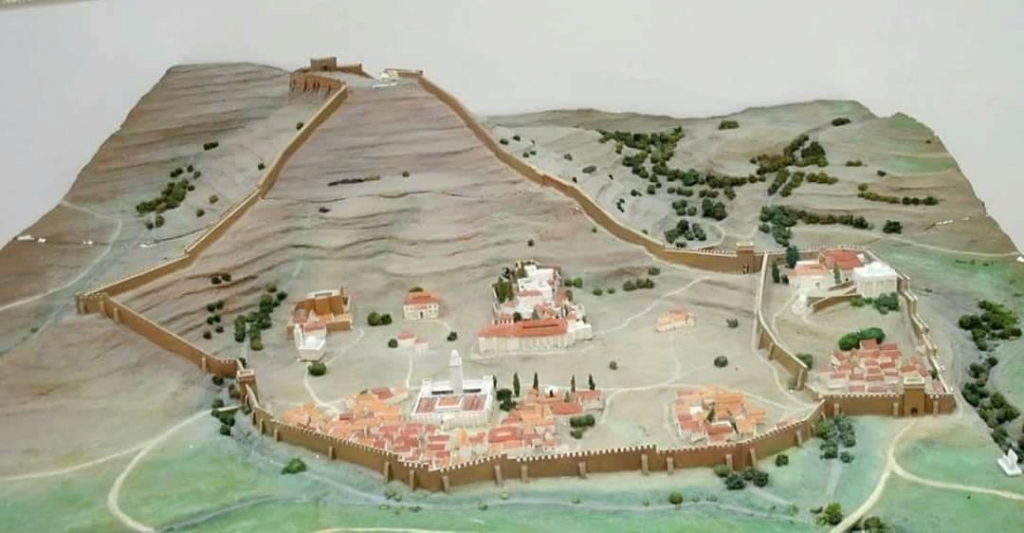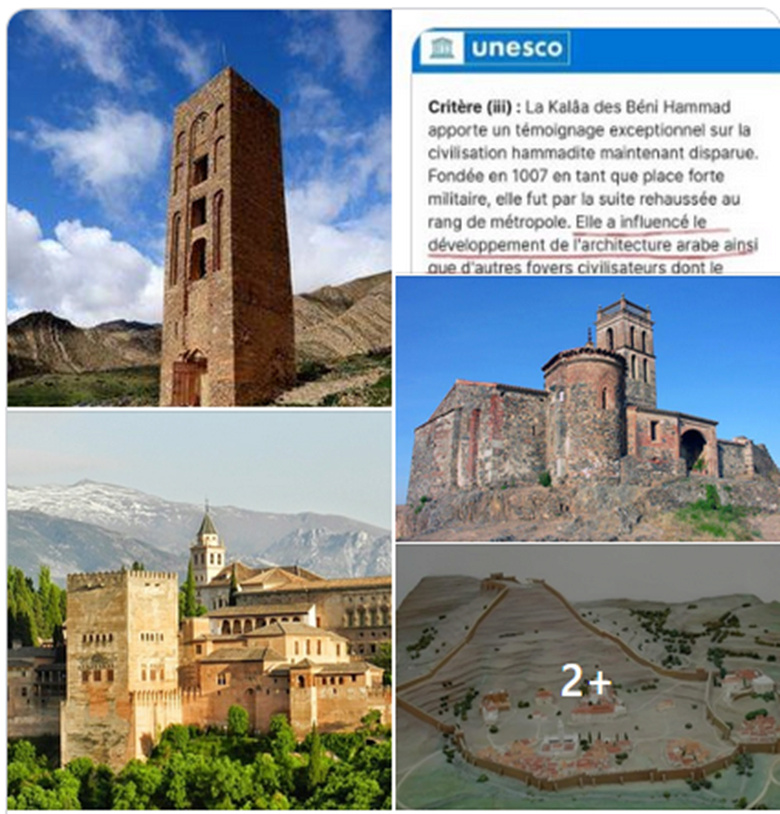What UNESCO said about Beni Hammad Castle:

“The remains of the capital of the first Beni Hammad emirate rise in a picturesque mountainous location. It was founded in 1007 and dismantled in 1152, and it brings back to us the authentic image of a fortified Muslim town. The mosque, with its prayer hall consisting of 13 floors and eight partitions, is considered one of the largest mosques in Algeria.
The architectural engineering art emerging from that civilization, in which the remains of the Beni Hammad Castle remain as a witness, influenced the development of Andalusian and Maghreb Islamic architecture, and that influence extended to the island of Sicily.

The UNESCO report testifies to the greatness of the Amazigh civilization in Algeria in the Islamic era and before it and its influence on North Africa and parts of Europe. In the pictures we find a picture of the ruins of the minoa of the great Ben Hammad Mosque, which was built in the year 1007, and a typical picture of the citadel before its ruin, and the similarity of the architecture of its construction to the architecture of the building of the famous Alhambra Palace in Andalusia. Which was built by the Zirid Berbers in the year 1238. We also see the architecture of the Seville Castle, which was built in the year 567 AH/1173 AD, that is, a few years after the destruction of the Beni Hammad Castle, which suggests the transfer of part of the engineering expertise to Andalusia and the copying of the building style of the Beni Hammad Castle, where most of the famous buildings there were built later. This period, and this is also mentioned in the book of Uwais Abdel Halim, see reference (The fame of Banu Hammad spread until it spread to Andalusia)
This is only evidence and an indisputable response to the common sayings that have become postulates in history books and the media, which attribute all the engineering and architectural art in North Africa in that era to Andalusia, while it is a pure and unquestionable North African Berber style. Therefore, the history of North Africa must be rewritten. Correctly not subject to the ideology of foreign subordination and self-loathing.
Source: website

